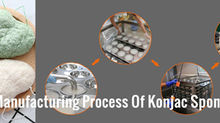What's Photocatalyst Filter Foam?
Environmental-friendly Filter materials employed for transporting photocatalyst are made from high efficiency, high quality, and minimal resistance material.
Photocatalyst with a special surface is employed for importing titanium dioxide. High quality and efficient nano state is uniformly coated on the substrate’s surface using cutting edge technology and nano amount is utilized to produce an evenly dealdylased photocatalyst to ensure that it sticks properly to the substrate’s surface with very few particles.
Nano TiO2 has the ability to decompose toxic substances into water and carbon dioxide on exposure to light which is beneficial for the control of pollution, UV protection, and sterilization. It is also beneficial for TVOC (total volatile organic compounds), ammonia, formaldehyde, benzene, and many other toxic substances with very strong eradication and degradation ability. Nano titanium dioxide can eliminate several bacteria such as Staphylococcus aureus, E Coli, Pseudomonas aeruginosa, and so on. It also has the ability to decompose toxic substances released by dead bacteria through its over 99% antibacterial effect.
Through high-end technology, photocatalyst foam is induced with titanium dioxide during production and adopted by base materials for producing PU foam, paper honeycomb, and aluminum.
Photocatalyst is popularly known in different parts of the world to be environmentally friendly as a result of its ability to cleanse the air and decompose toxic substances using UV light without leaving any form of pollution.

Features
Instead of a basic transfer on a substrate, it accurately eradicates pollutants.
On exposure to pressure and temperature, it degrades pollutants
It is very easy to produce using locally available materials.
It is cost-effective, economical, and consumes a very low amount of energy.
It is effective against a wide range of pollutants such as bacteria, mold, and VOC.
Application
Air cleaning devices, air conditioners, purification systems of automobiles, workshops, and so on.

Photocatalyst filter sponge material
Photocatalyst, also known as a light catalyst is a nanoscale powder featuring several nanoscale semiconductors that are sensitive to light and used to guarantee sufficient exposure and ventilation. Reprocessing and combining the carrier can help eliminate toxic substances like aldehydes, benzene, hydrocarbons, nitrogen oxides, carbon monoxides, and so on. Apart from its antibacterial effect, it can also break down toxic substances into harmless H2O and CO2.
The function of sponge in photocatalyst filter
The air purification feature of photocatalyst on toxic substances like benzene, formaldehyde, carbon monoxide, sulfur dioxide, nitrogen oxide, carbon monoxide, and so on has a significant impact on human health.
Its antibacterial effect helps to sterilize the decomposition of Escherichia coli, Staphylococcus aureus, and other bacteria that release toxic compounds from their dead bodies.
It comes with a deodorizing effect against cigarette, refuse, animal, and toilet smell.
Its antifouling feature help to prevent pollution from oil, dust, dirt, and other types of pollution. It also helps to prevent bathroom molds, surface rust, fading paints, yellow toilet base, water rust, and so on.
The characteristic sponge of the photocatalyst filter
On exposure to light (UV), it generates a medium for catalytic activation and elongated use which makes it the top choice for most air conditioners, cleaning equipment, radiators, air purifiers, and other types of air-purifying systems.
Classification of photocatalyst filter sponge
Based on material:
Aluminum photocatalyst filter, cotton-based photocatalyst filter, non-woven photocatalyst filter, and nickel-based photocatalyst filter.
Based on appearance and photocatalyst purification
2.60 photocatalytic purification, porous foam photocatalytic purification, perforated metal mesh, aluminum honeycomb mesh.
Based on process
Paper box photocatalyst filter, aluminum frame photocatalyst filter, composite photocatalyst filters.
How to identify photocatalytic filter sponge?

A liquid inorganic binder is employed in producing a genuine photocatalyst and the light photocatalyst changes color while the counterfeit photocatalyst filter is developed using an organic binder. Including a dispersing agent to an organic titanium dioxide will transform its color to black after a couple of hours due to the reaction of titanium dioxide when exposed to direct sunlight and the oxidation of the solution’s organic parts.
Combining formaldehyde scavenger with flavor agent can help increase its deodorizing function but only last for a couple of days and causes pollution. Most individuals use formaldehyde scavengers to represent photocatalyst which is harmful to customers.
A genuine and high-quality photocatalyst is a liquid and odorless solution while the counterfeit photocatalyst smells like resin, alcohol, or any organic substance. This is known to cause severe pollution.
A genuine photocatalyst filter will either appear in any of the two colors: white or transparent while counterfeit photocatalysts are either milky in color or have a dark shape that looks like a gum paste. Transparent photocatalyst can also come in white or blue color. On exposure to light, it changes to golden yellow while the counterfeit photocatalyst does not have this feature.
The surface of a genuine photocatalyst will appear well under rain or when spray drying. It also exhibits high viscosity while counterfeit photocatalysts have very low viscosity and are easily affected by environmental conditions.



































Comments